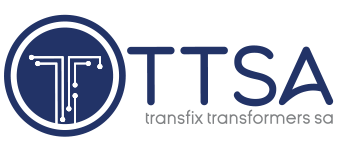The National Transmission Company South Africa (NTCSA), which is set to remain an Eskom Holdings subsidiary and owner of the transmission assets, has moved to explain the role of the yet-to-be-created Transmission System Operator (TSO) under the revised and newly endorsed unbundling strategy. The strategy has been approved by Electricity and Energy Minister Dr Kgosientsho Ramokgopa and will see Eskom Holdings retain not only the NTCSA as a subsidiary, but also the National Electricity Distribution Company of South Africa, as well as an entity currently dubbed GenerationCo, which will hold its legacy generation assets, and a new Eskom Green subsidiary to house its renewable-energy business.
Posts
A new Eskom unbundling strategy, which uncouples the grid assets from the system operator role to be performed by a separate and yet-to-be-established transmission system operator (TSO), has been approved by Electricity and Energy Minister Dr Kgosientsho Ramokgopa. Under the strategy, the National Transmission Company South Africa (NTCSA) will continue to own, expand and maintain the national grid and will also remain a subsidiary of Eskom Holdings.
The South African Photovoltaic Industry Association (SAPVIA) says demand for solar PV in 2025 continued to recover from the 2024 slowdown, which followed on from the loadshedding-induced surge of 2023 when 2.4 GW of capacity was installed. New installations contracted last year to about 1 GW, but have since recovered to above that level in 2025.
Eskom has signed a memorandum of understanding (MoU) with Samancor Chrome and the Glencore–Merafe Chrome Venture in a bid to finalise an electricity tariff solution that prevents the closure of additional smelting capacity, and averts the threat of widespread job cuts in the sector. In a statement, Eskom said a joint task team had been set up to develop the intervention following what the State-owned company described as constructive engagements held on December 5 with Electricity and Energy Minister Dr Kgosientsho Ramokgopa and organised labour.
Strong investment in power infrastructure drove a 2.2% increase in global energy employment in 2024, but rising labour shortages now pose a risk to future project delivery, according to the International Energy Agency’s (IEA’s) ‘World Energy Employment 2025’ report, published on December 5. The report states that energy sector jobs reached 76-million worldwide in 2024, an increase of more than five-million since 2019. Over the past five years, the sector has accounted for 2.4% of all net new jobs created globally. The power sector generated most of this growth, accounting for three-quarters of new positions and overtaking fuel supply as the largest employer in energy.
In this article, GE Vernova grid solutions chief strategy and growth officer for the Middle East and Africa Bernard Dagher writes that meeting Africa’s rising electricity demand will require a significant expansion of generation and transmission infrastructure and that digitisation could play a role in delivering cost savings and efficiency improvements. The continent is projected to increase electricity generation from 939 TWh in 2024 to 1 446 TWh in 2035 – an increase of 54% in less than a decade (IEA World Energy Outlook 2025). Delivering this capacity to consumers requires a substantial commitment to grid infrastructure development. This development goes beyond traditional transmission and distribution lines; it involves creating a grid prepared for a world that is decarbonising and electrifying.
Six local lithium battery and inverter manufacturers have joined forces to form the South African Battery Manufacturers Association (SABMA) in an effort to raise awareness of the country’s energy storage prowess and champion South Africa as a global production hub. Formed officially in October by Balancell, BlueNova Energy, Creslow Energy Solutions, Freedom Won, maxwell+spark and Solar MD, SABMA aims to promote the growth of the domestic manufacturing sector and advocate for industry-friendly trade and industrial policy.
Electromechanical equipment manufacturer ACTOM has unveiled a revitalised transformer production and testing facility in Pretoria. The 40 000 m2 site previously served as a factory for Powertech Transformers’ SGB-SMIT Power Matla subsidiary, which entered into business rescue in September 2023 owing to financial distress.
Making headway in the Namibian energy sector, renewable-energy solutions provider Sustainable Power Solutions’ (SPS’s) latest project – the 10 MW Maxwell solar power plant – is a wheeling project that could signal the evolution of Namibia’s energy transition. The Maxwell plant, which was successfully commission in May 2025, will be providing clean solar power to gold producer B2Gold’s Otjikoto mine until 2031 and will produce about 26 GW/h – or 26 000 MW/h – of solar power a year.
South Africa’s construction and infrastructure sector enters 2026 with a rare window of opportunity. The Medium-Term Budget Policy Statement (MTBPS), delivered by Finance Minister Enoch Godongwana in October, sets out a decisive, albeit fragile, pivot towards rebuilding the country’s economic base by shifting the composition of public spending away from consumption and towards capital investment. The National Treasury’s insistence on restoring fiscal discipline is paired with an equally strong …
INDUSTRY NEWS
- NERSA appoints Electricity Market Advisory Forum to guide power-market reformDecember 19, 2025 - 2:04 pm
- Eskom offers more details on envisaged roles of the NTCSA and the TSODecember 18, 2025 - 11:04 am
- NTCSA says any electricity deal to salvage Mozal must ensure its financial sustainabilityDecember 17, 2025 - 3:01 pm
WHERE TO FIND US
Address
9 Yellow Street
Botshabelo Industrial Area
Botshabelo, Free State
Call / Email Us
Tel: +27 (0) 61 956 6772
Email: info@transfix.co.za
